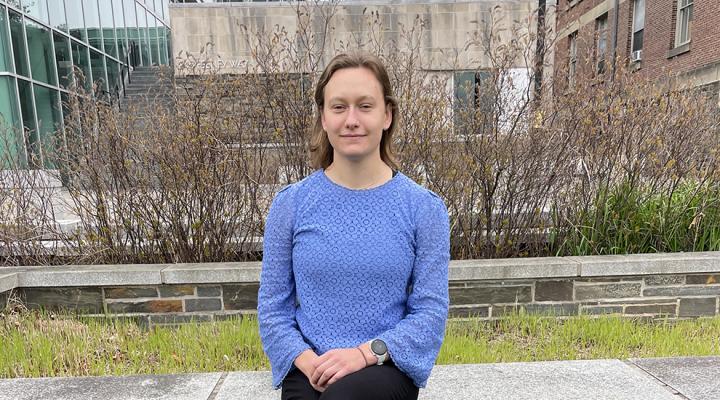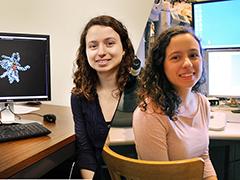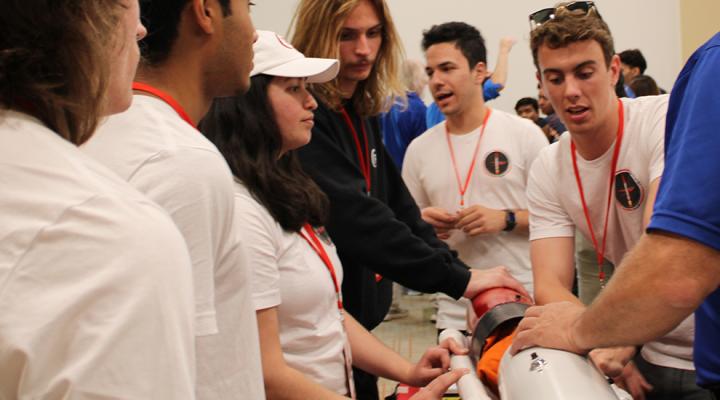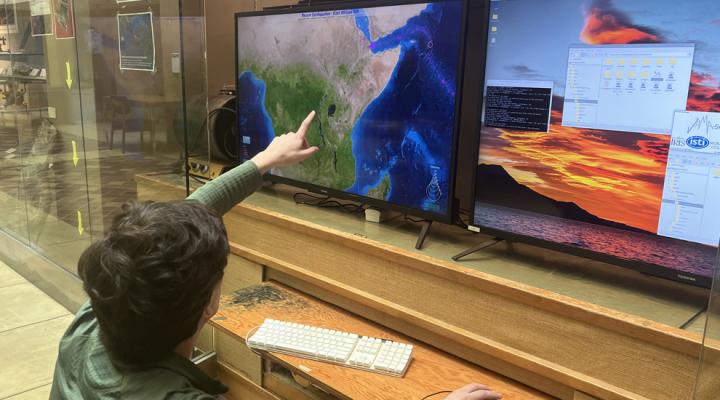Born in Leskovac, Serbia, Nina and Jovana Andrejevic moved to a suburb of Chicago when they were seven. They spent the remainder of their childhood there. Daughters of architects, the twin sisters came of age having strong creative design influences as well as an enthusiasm for math and science. Their interest in scientific and technological perspectives developed further in their high school physics class, where their teacher used inventive ideas to solve challenging and objective problems.
In 2012, both enrolled in Cornell’s College of Engineering. Initially they had limited knowledge about specific research topics, but they registered for Introduction to Nanoscience and Nanotechnology taught by Assistant Professor Lena Kourkoutis. This class provided their first insights into the world of the nanoscale. After examining laminar fluid flow, growing carbon nanotubes, and studying the luminous properties of quantum dots, Nina and Jovana were captivated with nanotechnology. Both also affiliated with AEP.
Nina went on to join Professor David Muller’s research group. She is part of a team that places physics in an important, global context using electron microscopy to examine renewable energy materials. Alongside her graduate student mentors, she applies Transmission Electron Microscopy (TEM) and electron tomography to analyze carbon-supported platinum nanoparticles that serve as catalysts in fuel cells, a sustainable alternative to traditional energy conversion devices. Studying the platinum loading and distribution of the catalysts, the team hopes to help companies optimize the use of these expensive catalysts to make fuel cell technology more affordable and accessible.
Jovana joined Professor Paulette Clancy’s computational research group, where she has incorporated interdisciplinary concepts into her research. She unites principles of chemistry, physics and computational science to study how quantum dots nucleate, grow, and interact. Like her sister, Jovana hopes to contribute to the development of renewable energy sources, particularly through the study of structures that are promising solar cell materials. Quantum dots are remarkably versatile in their potential applications, and she aims to understand their molecular level behaviors in order to implement them on a larger scale.
At Cornell, Nina and Jovana have had the opportunity to work as teaching assistants in physics. “An extremely rewarding experience,” they both agree. The sisters not only hope to continue their research in graduate school, they have the long-term goal of becoming professors.
When they’re not in the lab, their favorite place at Cornell is in their residence hall JAM, a music-themed program house. They both play flute and piano. Since their freshman year they found a fantastic creative outlet from their studies playing music with fellow students, composing songs, and attending performances in the hall. As a take-away from Cornell, Nina and Jovana value the lasting bonds between AEP students, and the sense of strong support and encouragement from their colleagues.





